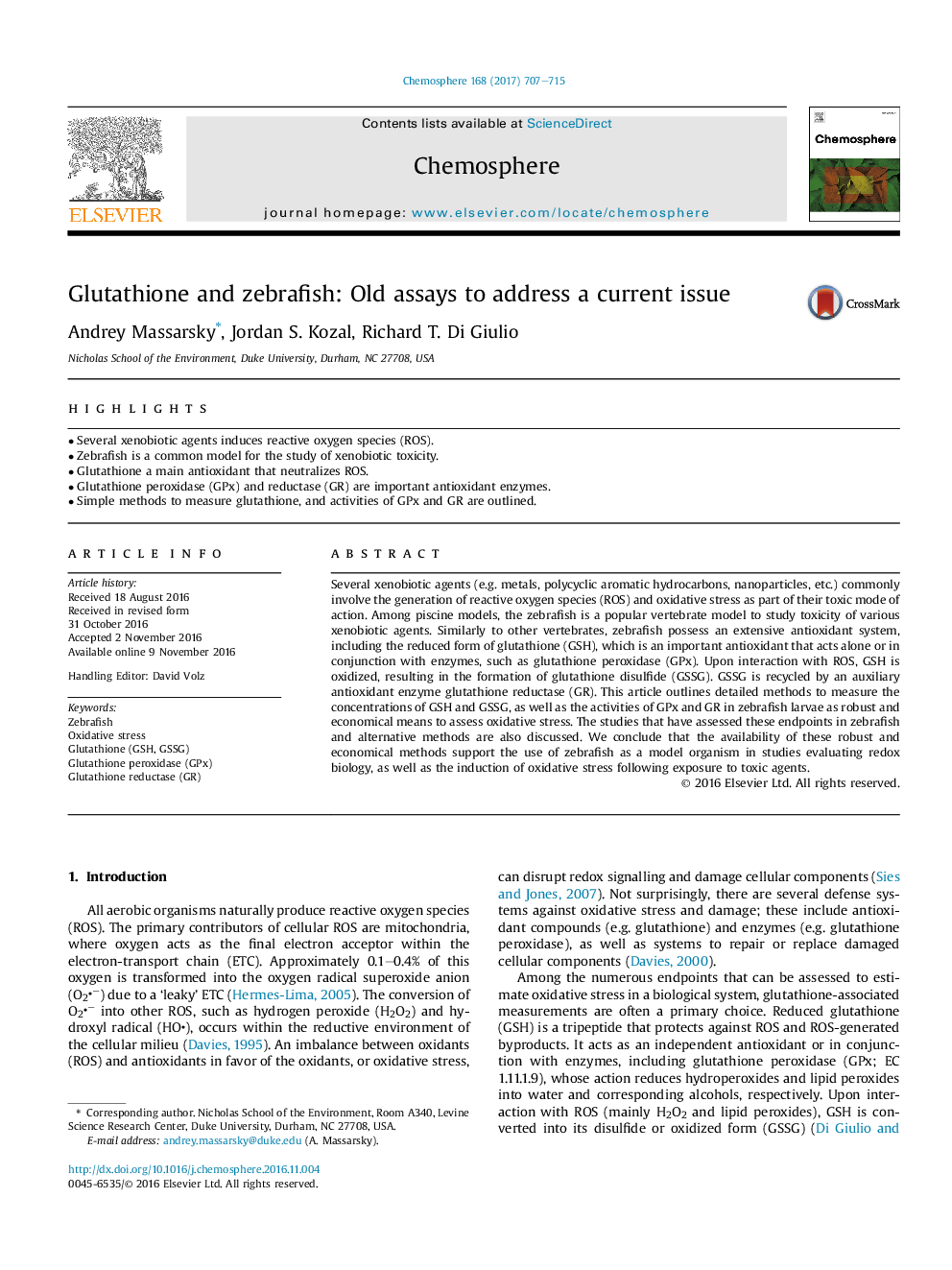| کد مقاله | کد نشریه | سال انتشار | مقاله انگلیسی | نسخه تمام متن |
|---|---|---|---|---|
| 5746676 | 1618803 | 2017 | 9 صفحه PDF | دانلود رایگان |
- Several xenobiotic agents induces reactive oxygen species (ROS).
- Zebrafish is a common model for the study of xenobiotic toxicity.
- Glutathione a main antioxidant that neutralizes ROS.
- Glutathione peroxidase (GPx) and reductase (GR) are important antioxidant enzymes.
- Simple methods to measure glutathione, and activities of GPx and GR are outlined.
Several xenobiotic agents (e.g. metals, polycyclic aromatic hydrocarbons, nanoparticles, etc.) commonly involve the generation of reactive oxygen species (ROS) and oxidative stress as part of their toxic mode of action. Among piscine models, the zebrafish is a popular vertebrate model to study toxicity of various xenobiotic agents. Similarly to other vertebrates, zebrafish possess an extensive antioxidant system, including the reduced form of glutathione (GSH), which is an important antioxidant that acts alone or in conjunction with enzymes, such as glutathione peroxidase (GPx). Upon interaction with ROS, GSH is oxidized, resulting in the formation of glutathione disulfide (GSSG). GSSG is recycled by an auxiliary antioxidant enzyme glutathione reductase (GR). This article outlines detailed methods to measure the concentrations of GSH and GSSG, as well as the activities of GPx and GR in zebrafish larvae as robust and economical means to assess oxidative stress. The studies that have assessed these endpoints in zebrafish and alternative methods are also discussed. We conclude that the availability of these robust and economical methods support the use of zebrafish as a model organism in studies evaluating redox biology, as well as the induction of oxidative stress following exposure to toxic agents.
Journal: Chemosphere - Volume 168, February 2017, Pages 707-715
